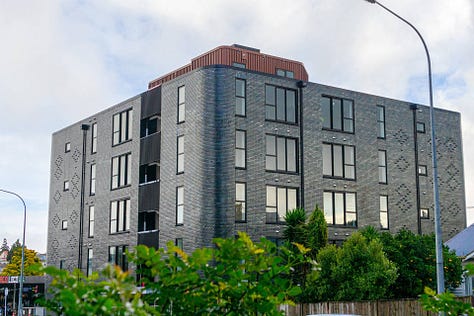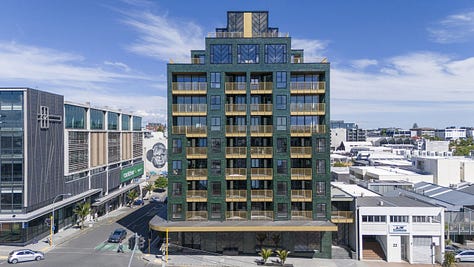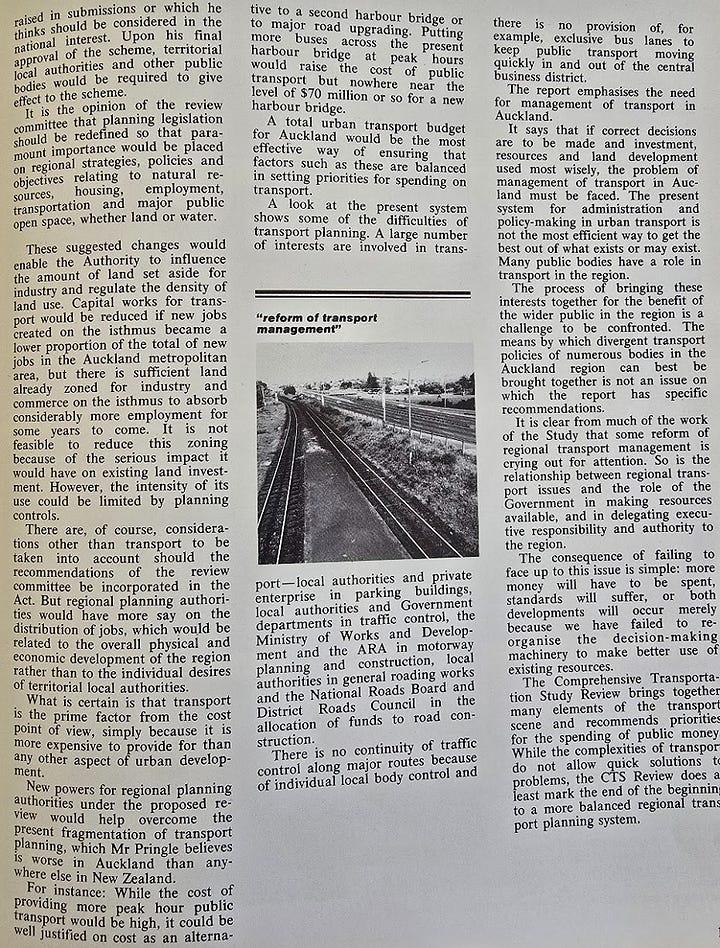An interesting article in Stuff a few weeks ago asked a couple of interesting questions in it's headline, "How big can Auckland get? And how big is too big?". Unfortunately, the article doesn't really answer those questions, instead focusing on current growth projections, but there were a few aspects to the article I wanted to highlight.
With Auckland’s population projected to hit 2.5 million by 2050, the city faces an uphill battle to balance growth with liveability.
More people are choosing to make Auckland their home than anywhere else in New Zealand, but how long will it be before it reaches saturation point? And is it damaging the rest of the country to have one city becoming increasingly dominant?
.....
Auckland’s population recently hit the 1.8 million mark, with New Zealand’s biggest city getting bigger and increasing disproportionately to the rest of the country.
New Zealand’s population grew from 5.12 million in 2021 to 5.35 million in 2023, according to Stats NZ. For Auckland over that period it jumped from 1,694,400 to 1,798,300.
So for the 231,500 net gain in population in New Zealand in that time, 45% of that gain was in Auckland.
Projections have been made by Auckland Council for what the city’s population might be in the years ahead and the medium figure for 2050 is 2.5 million, the highest prediction is 2.68 million.
Even if it’s at that medium figure, accommodating an extra 700,000 people (twice the current population of Christchurch) takes planning and Wayne Brown says a key to this is putting people in the right places.
“The Government are wanting us to plan for having enough land for 30 years, and we’ve easily got that,” he said.
“We don't disagree with what Minister (Chris) Bishop is trying to do.
“We want to have densifying in the city and in certain areas, but we don't want to densify areas that are flooding.
“We don't want to densify areas that have got particular character as well, but there's still miles of room and particularly we want to do it down the transport corridors.
“But we're in a bit of disagreement (with Government) on the idea you can have a three-story house, anywhere because we've got some nice areas in Herne Bay and Ponsonby and they don't really want that, and we don't want the city to become ugly.”
Let's target even higher
We focus our planning on some levels of expected growth and then trying to accommodate that but I think it would interesting to look at this from a different perspective, ie what level of population and density is ideal? What is a more effective city scale: the sweet spot between too small to be unable to afford desirable amenity and too big to enjoy that amenity (including the natural environment)?
For example Auckland is often (including by us!) described a a teenager; sort of half provincial town, half city. Too big to function well with everyone driving to the general store, but still small enough to struggle to afford the full suite of urban infrastructure. 1-2m feels awkward by this measure.
Too be fair in some areas little Tāmaki punches above its weight, we arguably have the country’s best Museum and best Art Gallery, we are on the way towards getting a big city wastewater system, for much of the city at least. But i think we can all agree transport is certainly an area where the city is stuck awkwardly between these two realms. And, as urban form and transport are essentially two sides on the one coin it really is these two issues that need to be front and centre in any population discussion.
I suspect that population level is higher than the 2.5 million we currently expect in 2050 and if so, the question could then become how we change things like our immigration settings to get to that ‘target’.
To be clear. A city of 1.8m needs a full rapid transit system to function efficiently and to support a higher quality of life, for its widespread driving system to work better, one of 2.5m even more so. The question is at what scale and importantly in what form, is this likely to be more efficient, effective, and fundable?
I suspect that population level is higher than the 2.5 million we currently expect in 2050, say, intuitively 3m?, and if so, the question could then become how we change things like our immigration settings to get to that ‘target’.
In addition, I imagine many people's reaction to population growth is to object to it or complain about it. We as a city (and country) also need to do better at taking about the benefits that having more people bring, such as more businesses so more job opportunities, business also have more customers, both the public and private sector being able to better invest in services and amenities, more vibrancy from things like more and better events, as well as many other benefits.
Bishop shouldn't trust the council
There are suggestions here as well as in other articles I've seen that indicate Chris Bishop doesn't fully trust the council when it comes to housing and I think he's right to be wary. Wayne Brown has asked that the council be allowed to withdraw the Unitary Plan changes still going through the approval process and resubmit new plans.
However, as we saw last time, council planners effectively took the view that the original Unitary Plan was perfect (it wasn't) and so tried to avoid change, at least to wealthier areas. Even when given very clear requirements about upzoning, the council spent all of it's time trying walking the streets of inner suburbs (in person and digitally) to come up with excuses as to why they shouldn't have to be changed. They did this at the expense of things like ensuring that areas being upzoned also had zoning to ensure enough amenities and services could be added to support all of those potential new residents.

Put another way, they had the time to individually assess thousands of properties for special character protection – but not enough time to make the areas that will have to pick up the housing slack more liveable for the people who will be living there.
Not to mention they just completely ignored a huge swathe of the isthmus just in case Light Rail might be built, even when some of the areas are around existing train stations

Given most of the people involved in making decisions like this are still working at the council and would be involved in any further changes, it's hard to have faith they'll do any better this time.
Ugly is for the poor?
The mayors comments come off quite NIMBYish but also quite uniformed and come off as "put ugly density where the poor(er) people are".
There's nothing inherently ugly about density. It can be done well and beautifully as we've seen time and time again from developers like Ockham.



If the mayor and council are worried about the city looking ugly, the question they should be focused on is how they can get more developers to build beautifully. For example, what policy/planning rules could be changed, or incentives added to encourage good design. Not all developers will respond to that though so in addition, how can design rules be strengthened to ensure better outcomes.
I noted it was quite uninformed too, there was actually very little upzoning that actually occurred in Herne Bay or Ponsonby.


The mayor is right about one thing
In talking about the cost of infrastructure, the mayor does get one thing right.
Wayne Brown is worried that as Auckland grows, it puts more financial pressure on those already living in the city and he wants growth to pay for growth.
“Everyone arrives here and they expect to have a library, a park, power, sewage, water and all that other stuff,” he said.
.....
The Mayor also believes there is room to fit more people in the city centre, which works out cheaper.
“The more people that live in the city is good because they don't need a car, they don't need a bus. They're here, they will walk around the city,” he said.
“We could fit another 40,000 people in without any trouble at all. All the infrastructure is there. So it's having growth that doesn't cause paid for-infrastructure, that's the issue.
Not only is it cheaper because the infrastructure exists, more people in the city centre also means they're more likely to walk, cycle or catch public transport which is also better for health and emissions outcome.
But he also repeats some failed ideas.
As more people come to Auckland, Wayne Brown wants them to be able to work in the areas where they live, rather than commuting to other parts of the city.
That requires more than just building houses, but also establishing new commercial and industrial areas.
“If there's new growth in Beachlands or Drury, the people will get jobs in Beachlands or Drury,” he said.
“With the old style, they just had houses [built], there's a bloody great problem and we have to build an Eastern Busway, because they don't have the jobs out there.
“We've got to think about it differently, so making provision for growth with jobs in the places where the growth is, is a good idea.”
The idea of putting more jobs in the suburbs in the hope that it will reduce commuting has often been presented as new thinking but has been the policy of Auckland for around 50 years, if not longer and it's been a huge failure that has actually made the problem worse.
The idea is why we have office and industrial parks dotted all around in region and it often leads to more vehicle travel, not less. That's because of a few factors, such as:
People will often take a better job opportunity even if it means more travel. This is more of an issue in industries/roles where specialist knowledge is required.
People move jobs more than they move homes.
Not everyone can afford a home close to where they work.
Even if you manage to find a job close to home, your partner may not so long travel might still be involved.
All of these office/industrial parks jobs all over the region mean we have lots of people travelling in many different directions and that makes it incredibly hard to serve with public transport or active modes meaning more people drive and congestion is worse.
I happen to work in one such office park (Smales Farm) and of my immediate team of 10 people only three also live on the North Shore, with one person coming from as far away as Manurewa. With the exception of myself, they all drive because public transport options take a lot longer than driving and there's very little that can be done to change that.
If even just all of office jobs dotted around Auckland were instead in the city centre or nearby in the city-fringe areas, it would have been much easier to justify investment in high-quality public transport projects like the City Rail Link earlier, that can make public transport truly compete with driving.
The idea of spreading jobs out also reminded me of an article I came across a while ago that my late grandmother had saved. It's from an Auckland Regional Authority publication in December 1976 and titled "Blueprint for transport".
The CTS Review report offers a combined land use and transport strategy to ease the requirement for capital works, particularly in roading. In essence the objective is to put more jobs nearer to where people live. And that's in the suburbs.
"If we are to make more efficient use of our transport resources we have to develop a land use pattern with advantages for transport," said Mt Pringle.
Getting jobs into the suburbs is the reports main conclusion on how urban development should occur from a transport point of view. Otherwise large new capital works will be needed to cope with heavy commuting into the central isthmus. These cannot be provided without such unpleasant side effects as the removal of homes, general street widening and increased noise and air pollution.
.....
The preferred land use strategy from a transport viewpoint would therefore promote a high level of job self-sufficiency in outer sectors, limit the employment growth on the isthmus and develop outer sectors in a way which will promote more use of non-radial transport corridors.
"Transport prefers dispersal of jobs to avoid expenses like the central motorway system and Harbour Bridge," said M Pringle
"Transport prefers dispersal" sounds exactly like the kind of quote made up to justify plan made up of biased reckons.
The whole thing is fascinating in highlighting just how little the conversation has changed in 50 years. Most of it feels just like the kind of thing we still see today, especially from some business/road lobby groups, especially the broad dismissal of public transport as an option.






